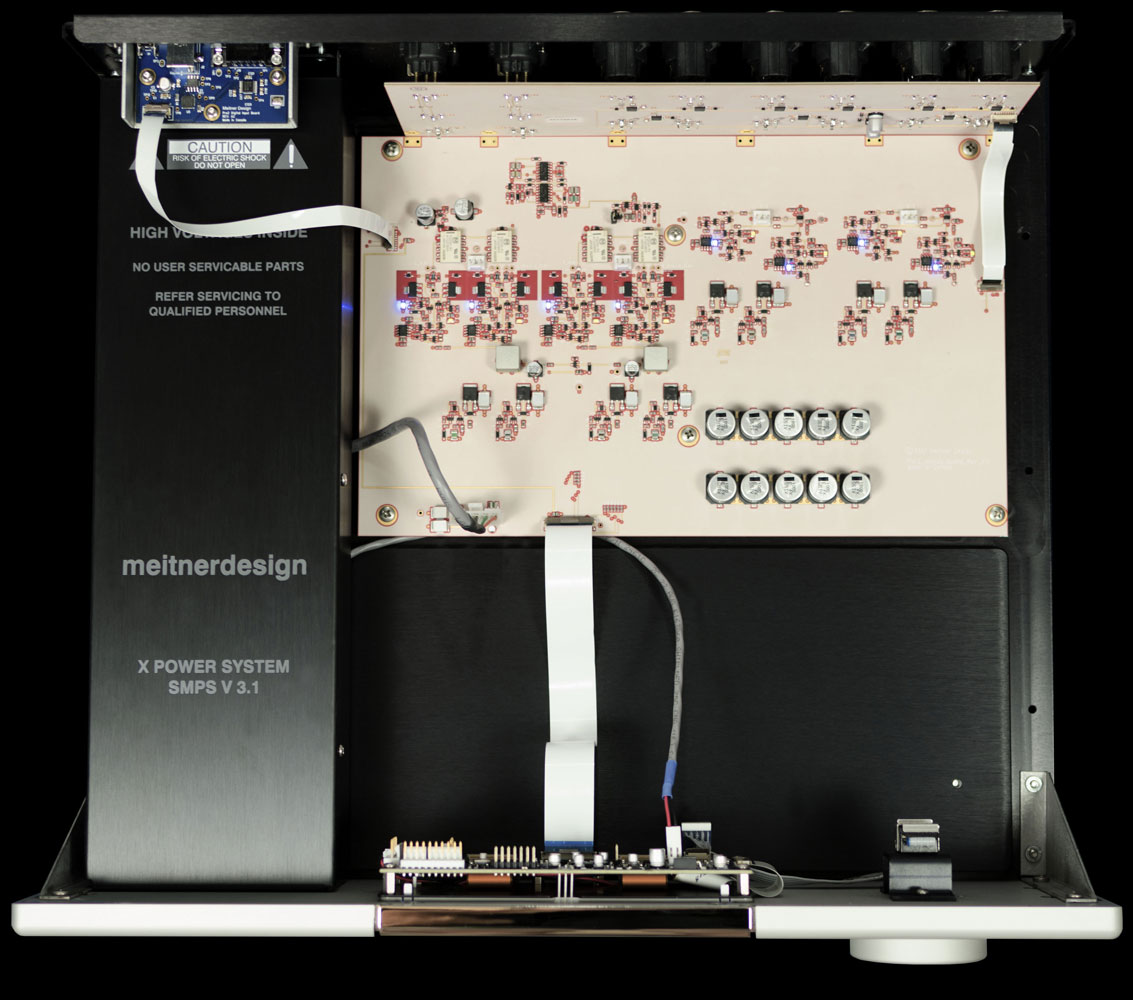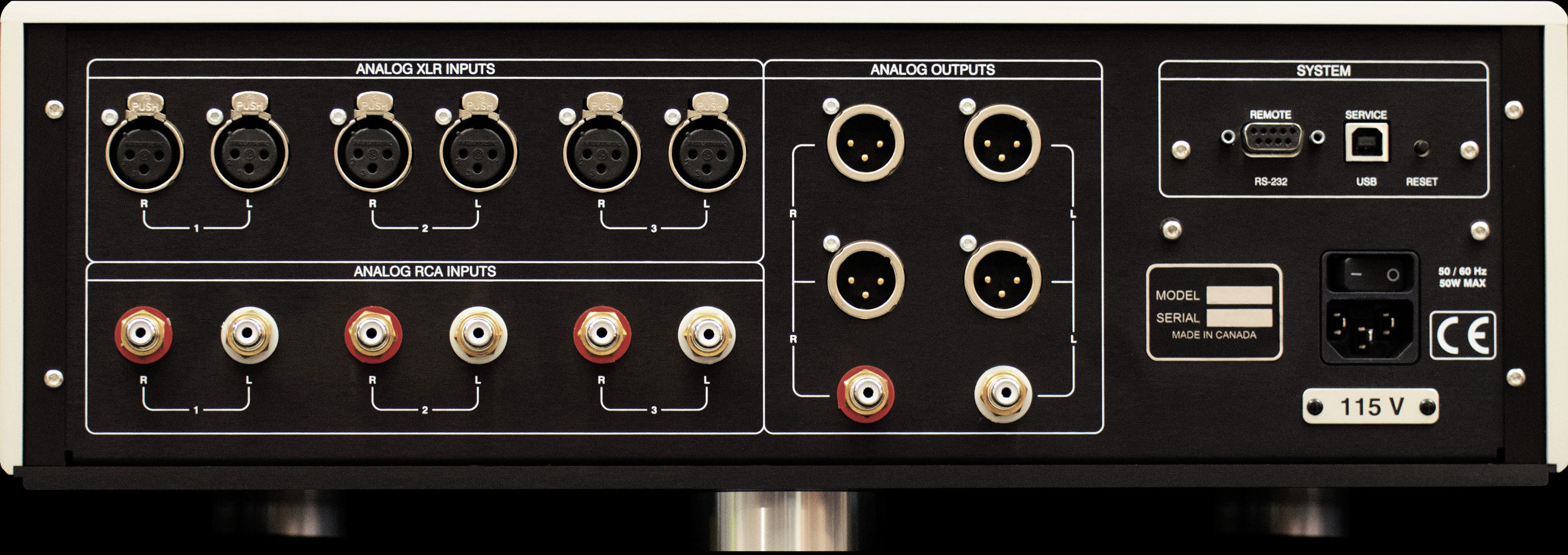Listening (analog sources)
Initially, listening to vinyl left me somewhat perplexed as it suffered in some ways in comparison to what I had been hearing with digital. I spoke to Ed Meitner about this and he immediately asked if I was using a tube phono preamp. He explained that the output impedance of the Audio Note phono preamp probably was a mismatch with the input impedance of the EMM PRE preamp. Fortunately, the fix was simple and involved changing the input impedance of the input used for phono, leaving the remaining inputs unchanged. This completely solved my problem and all listening was done with this modification.
Gentle Giant, Glass House,LP.I have owned this record since it came out in the 1970’s. By far, the best that I have heard it is in the present reference system with the Audio Note preamp and phonostage. Honestly, I expected to be disappointed when I played this through the EMM Labs PRE. I mean, for heaven’s sake, the EMM uses transistors. That’s OK for digital, but tubes and analog are a marriage made in heaven, right? Thus, I was stunned to hear Glass House on vinyl through the PRE. I have never heard this level of detail on this record before. Much of the percussion involves mallet instruments, which are metallic. The overtones were crisp and clear in a way that I have rarely heard outside of a live performance. I could for a change understand at least some of the words that were being sung, never a strong point with Gentle Giant. And if you know Gentle Giant, you know that there will bean almost bewildering array of instrumental textures thrown at you, moment by moment. In the end the clarity with which I could distinguish all the varied textures and sounds, combined with the sheer balls of the presentation, was just plain stunning.
Tord Gustavsen, ECM, LP. This was essentially an experiment to see how the LP would sound on the same system after having played the CD. The CD (see above) sounded very good but the LP killed it.
An interesting element of how this trio functions is that in the soft and relaxed expression generally adopted by the bass and drums, you wonder how the drummer is going to find anything to do. Well, he does and much of it has to do with textures and timbres of the different cymbals and drum heads. While Redbook digital can present cymbals in a fairly convincing manner, sometimes with more sparkle than analog, it does not necessarily capture the full timbre of the larger cymbals, which have quite a bit going on in the lower frequency range.
The PRE in combination with the Audio Note phono stage was stunning in this respect, in particular.Except that the combination was equally stunning in a number of other ways. Pianos can sound somewhat clinical. They are, after all, percussion instruments, and they can have a hard edge quite naturally. In real life, the tonal body that follows the attack brings the whole presentation life and richness. The combination of the PRE and the Audio Note phono brought something remarkable into the listening room: a sense of full- bodied life to the piano. The solid attack and the beautiful tone that ECM can give us make for some of the best reproduction of the piano that I have heard. It may not be a real piano but it is a beautiful illusion.
Falla, Three Cornered Hat, de Burghos, EMI LP.I listen to a great deal of orchestral music, which is notoriously difficult to record. At various times, EMI has done an extraordinary job, not infrequently in the early days when the company was using all vacuum tube gear and relatively few microphones. This recording not only came from that period but the record itself was also pressed during that same period (known as a semi-circle dog). The sound is so good that I have listened to it a number of times even though I am not that fond of Falla. De Burghos really does know how to make the absolute best of it. The presentation of the recording via the EMM Labs PRE and the Audio Note phono was simply stunning. Depth and center fill were exceptional with the soundstage extending well outside the edges of the speakers, which are all characteristics that I associate with the best tube gear. The upper end air, separation of instruments, placement, and varying timbres were all exceptional. The strings had not even the least hint of harshness, edge or glare (something that Redbook digital trips over with great regularity) nor was there any distortion in the climaxes.
I have played this recording often for friends and their most common reaction at the end of side 1 is to turn it over and play side 2. This is not usually the case with audiophiles, who are not infrequently chomping at the bit to hear the next thing before side 1 is even halfway over. I sometimes think that digital with its ease of switching tracks has encouraged this.
Comparisons
EMM Labs PRE2
Over the past five years, I have had various iterations (EMM makes running changes to its designs) of the EMM PRE2 preamplifier in my system, each better than its predecessor. I am convinced that the current version of the EMM PRE2 is an exceptional preamp, characterized by vanishingly low distortion, exceptional resolution of detail (particularly low-level detail), very good extension at the frequency extremes, low noise, dimensionality, and the ability to capture a fair degree of tonal color and instrumental body. It also works flawlessly with no hum or noise, no pops or other gremlins.The EMM PRE2 is less full throated and less dynamic than the PRE; however, the real difference is the unbelievable linearity the PRE delivers, capturing every transient, delivering the most silent backgrounds against which the slightest detail is apparent. The unit clearly benefits from its massive, tightly regulated and very sophisticated switching power supply, which is an offshoot of those used in EMM Lab’s top of the line digital devices, such as the DA-2 and TX-2, and to which I credit both the low noise and high level of impact, particularly in the bass.
Audio Note M-10 S.E.
At this point, you may be asking how does the EMM Labs PRE compare to the best that tubes have to offer, in this case the Audio Note M10 S.E. It may be heresy,depending on your view of what is accurate, but I see the EMM versus the Audio Note as presenting two exceptionally vivid and compelling recreations of recorded music, even though they are somewhat different in emphasis.
Much of the difference between the two units is in the midrange; however, it is more a matter of degree than of either unit being thin or recessed. There is a delicacy, a feathery warmth to the strings and woodwinds that I hear with the Audio Note M-10 Signature that I do not hear with the EMM Labs PRE. On the other hand, in some instances the EMM seems to have better control and to some extent more resolution. I was at times able to hear some breath and throat noises with the AN that were not apparent with the EMM. The piano also sounds somewhat different on each.Each of these units brings with it a fair degree of magic but the magic differs. Audio gear is designed to create the illusion of reality. The best gear brings the listener a sense of “startlement.”
Both the EMM and the AN give me a lot of the “magic” that feels like such a miracle— that makes for the best audio, which is as much art as it is science. I believe that, for classical music, I simply get a bit more excited by the magic with the AN on orchestral music. On the other hand, on some jazz and popular music (particularly more recent releases that came from music recorded in the digital domain), I preferred the EMM Labs PRE. That is simply my ears. With respect to much of the other music I have listened to on both units, it would be really difficult to say that I have a preference.As far as my experience goes, they are both as good as it gets. Which direction one goes is both a question of preference and, in this instance, pocketbook (the Audio Note being many multiples of the price of the EMM). My own solution to the dilemma will probably be to keep both.
Copy editor: Dan Rubin
- ← Previous page
- (Page 2 of 2)



Hi Fred, This review is stunning! Very comprehensive, very informative and very enjoyable. Thank You!
Andy Yuen
Fortunately, the fix was simple and involved changing the input impedance of the input used for phono, leaving the remaining inputs unchanged. This completely solved my problem and all listening was done with this modification. Can you please explain how this was achieved?
This is actually more of a modification, so that one of the PRE’s inputs would have the same impedance, matching the output impedance of the Audio Note phono pre. Customer would need to send the unit back to the factory to get this done. This is a free change. The process is outlined below:
1. Get an RMA number from us and schedule the change. Email us at support@emmlabs.com or better yet use the website form to send serial and contact.
2. Let us know what input do they want us to perform the change on.
3. If not using an Audio Note tube phono-preamp, they will need to let us know the matching impedance for us to implement on the input.